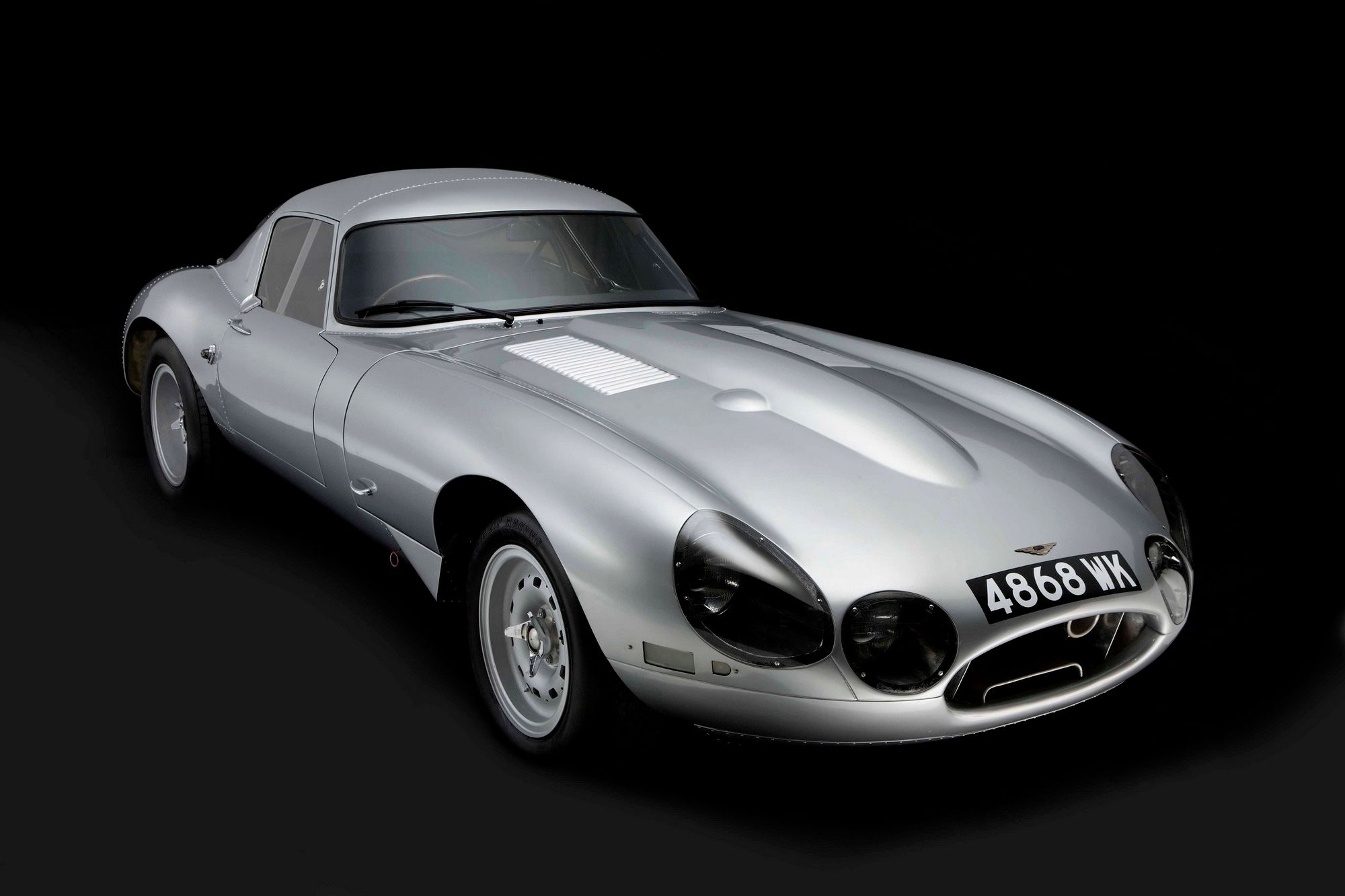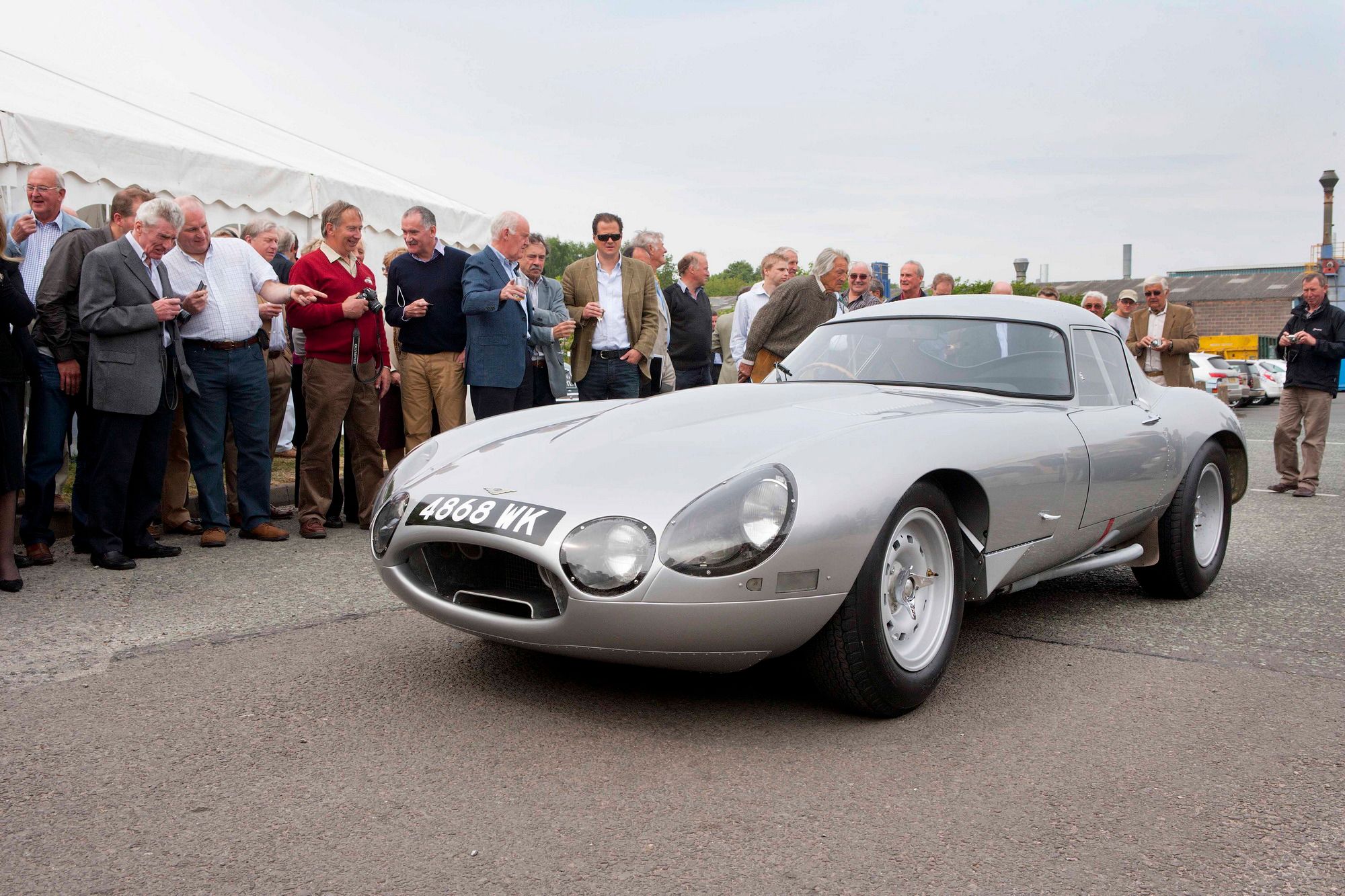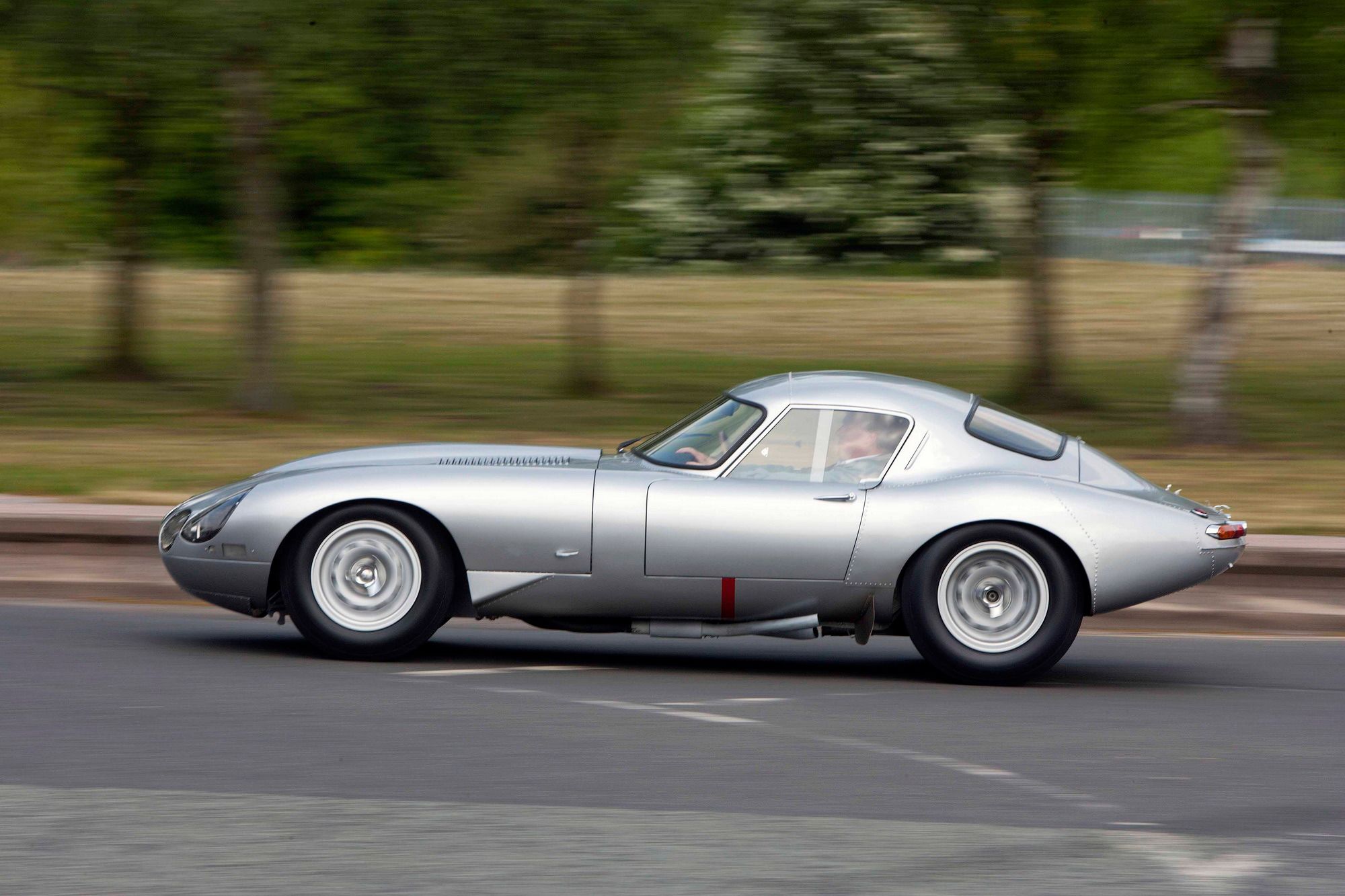This is the one and only factory low-drag lightweight Jaguar E-Type and is a vehicle that should have been laid to rest a long time ago. In fact, the Jaguar was thought to be dead until Peter Neumark of Classic Motors Cars breathed new life into the last racing car ever built at Jaguar's->ke39 factory.
Only twelve lightweight E-types->ke1246 were built by Jaguar's competition department back in 1963, but only one returned to undergo preparatory work for the LeMans race later that year. Malcolm Sayer designed the vehicle to have a special low drag body that would be coupled to a highly modified engine. This combination was set to take LeMans->ke1591 by storm and lead driver, Peter Lindner, to victory. Unfortunately, while on the Montlhery circuit, something went terribly wrong causing a crash that would end up killing Peter Lindner and destroying the Jaguar E-type. Sayer himself said that the vehicle could not be repaired and that opinion was echoed in the 1970s when a second survey confirmed the vehicle's fate.
Fast forward to 2007 when Peter Neumark entered the scene. Determined to revive the crumpled E-Type, Neumark set out to make history with one of the most complex restorations to ever take place in the world.
Hit the jump to see what dedication, passion, and 7,000 hours of hard work can accomplish.
jaguar-lindner-nocker-low-drag-e-type
- Make: Array
- Model: jaguar-lindner-nocker-low-drag-e-type
1964 Jaguar Lindner Nocker Low Drag E-Type
- Make: Array
- Model: 1964 Jaguar Lindner Nocker Low Drag E-Type
- [do not use] Vehicle Model: Array
The Build
The all aluminum body of the Low Drag E-Type was mangled beyond recognition during that horrific day on the track, but Neumark was determined to make it work again. With Andrew Turvey heading the project, the team went to work dismantling all of the body panels from the monocoque chassis. Each body panel was then flattened, repaired, and reformed to its original shape. We would compare this type of repair work to bringing back a crumpled piece of paper to its original shape. Once the body panels were placed onto the vehicle, the monococque was then spot-welded and riveted together. Over £30,000 ($49,500 at the current rates) worth of welding equipment had to be installed in Neumark's shop in order to complete the restoration.
All in all, the team used 90% of the car's original parts and took 5,000 hours to restore the body alone, leaving 2,000 man hours to finish the build. Project leader, Turvey, said the task could have never been complete without the help of Lindner's family who provided photographs and film footage from the day of the crash, as well as insight from Peter Wilson who was a technician at Jaguar's competition department and worked on the E-Type at that time.
Engine
When the Jaguar Lightweight E-Type came out in 1963, it was powered by a fuel-injected 3.8L Jaguar engine that produced 300 HP. When transformed into lightweight coupes, the Jaguar was then fitted with more powerful engines delivering 340+ HP. The engine used for the Low Drag Coupe was a small capacity "highly boosted" petrol engine.
Where Does It Go From Here?
Since its complete restoration, the Jaguar Lindner Nocker Low Drag E-Type has been invited to some of the most famous car events around the world, but first the car was unveiled in Bridgnorth in the presence of Jaguar E-Type test driver Norman Dewis, Lindner's nephew Tomas Fritz, and Patrick Lansard, the man who discovered the abandoned and crashed vehicle in a garage in 1974. From a mangled piece of aluminum, a £5 million ($8.2 million at the current rates) Jaguar E-Type was born, just in time for the E-Type's 50th Anniversary. Too cool.
Peter Neumark, the Chairman of Classic Motor Cars said: "This is one of the most major restorations ever to take place in the World. Many said that it could not be done but we have proved them wrong."






